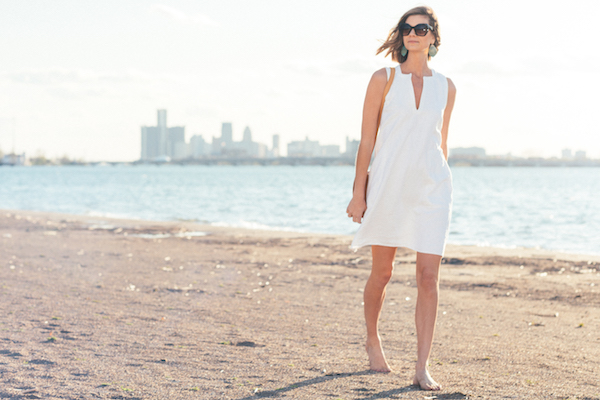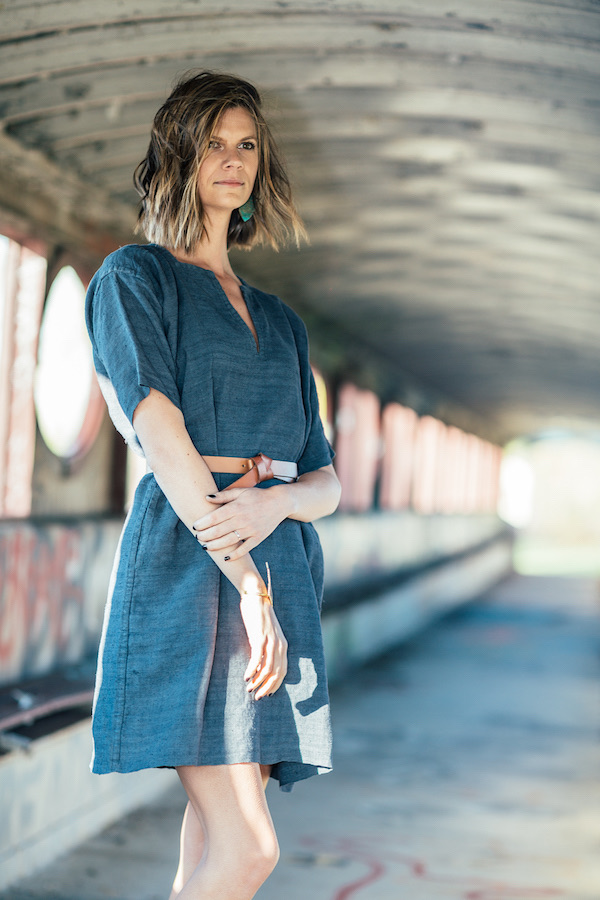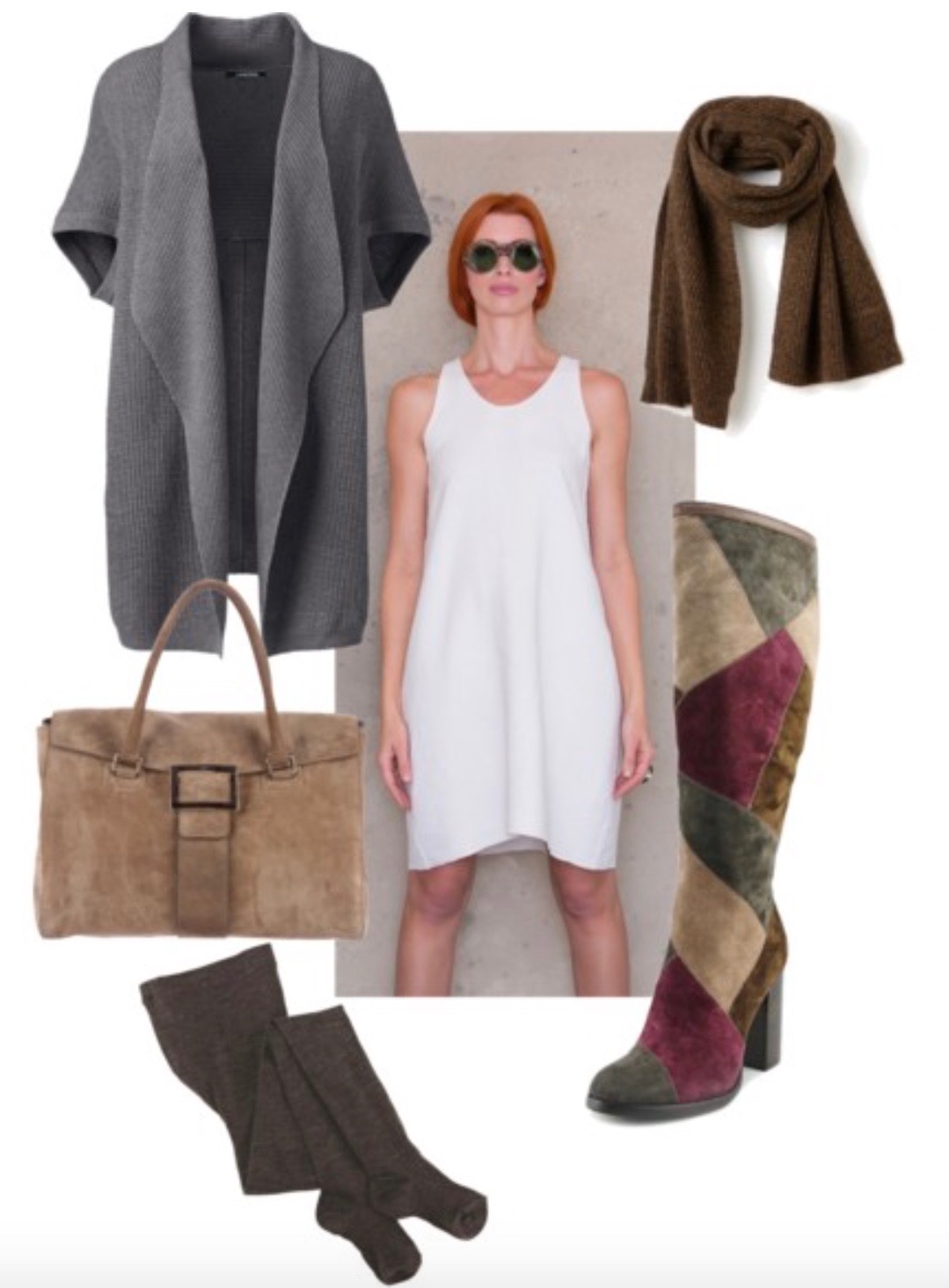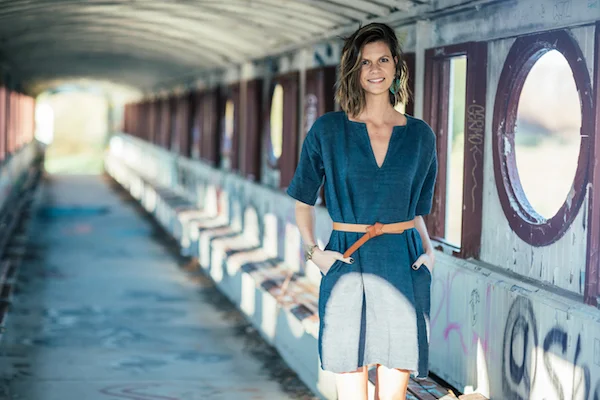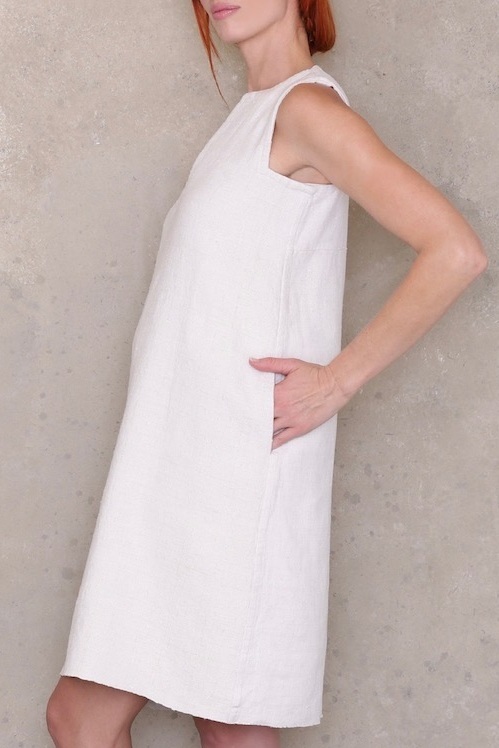Sewing with Linen and Ann Normandy Design Sewing Patterns
Can you explain the different types of linen for different dress styles?
There are different weights of linen. Medium to heavier weight linen is typically used for dresses, skirts and pants. Lighter weights, such as tissue linen are used for blouses and tops. My collection is unique, I prefer to use rustic, heavy weight fabric. The heavier weight linen drapes and moves on the woman’s body perfectly and smooths out the crinkly wrinkles you see on linen. A medium weight linen can be used with the dresses and pants of my collection, however it is recommended to line the garment to give it structure and body.
The Ann Normandy Design Sleeveless Shift Dress PDF sewing pattern, made with a medium/heavy weight reclaimed, handwoven, French linen. Photo credit: Photographer: Remy Roman, Detroit; Model: Closet Confessional Style Blogger, Dana Frost. Location: Belle Isle, Detroit.
Is heavy weight linen hot?
Absolutely not. When I was testing the garments for the apparel line, my husband was working on a project in Germany, we lived in Munich the summer of 2013 for 12 weeks. it was the hottest summer on record- in the 90s and even into the 100s every day. We had no air conditioning or window screens. I was in the testing stages of the collection and brought samples never intended to be worn outside of the house. Each sample was made from pieces and scraps of my stash of reclaimed handwoven French linen. Very dense heavily woven textiles. Even though the linen was very heavy, it was incredibly cool. Linen is extremely breathable. They were the coolest pair of clothes I had and I ended up wearing the samples everywhere. When I perspired, it wicked away and dried quickly. When I hung this material up to dry, it dried faster than any dry wicking or cotton fabric I had. I even ended up sleeping in them!
The Ann Normandy Design Slip Dress PDF sewing pattern, sewn with a heavy weight antique French linen Nappe de Vendange (final harvest tablecloth).
What is your favorite type of linen to use?
Good quality, rustic, heavy weight linen. I also use and love vintage and antique linen. The quality of vintage linen is often much better than most modern commercial linens. There are only a few commercial linen fabrics manufacturers that I prefer. The most readily available and is my modern go to is fabrics-stores.com. Located in Eastern Europe, the mill is an environmentally friendly textile manufacturer.
The Ann Normandy Design versatile Short Sleeved Dress PDF sewing pattern, sewn with an antique rustic heavy weight, handwoven linen found during my travels in Germany. Photo credit: Photographer: Remy Roman, Detroit; Model: Closet Confessional Style Blogger, Dana Frost. Location: Belle Isle, Detroit.
What machine setting, needle, and thread should I use to sew linen?
I recommend you use a short stich (2.5) for sewing linen. Start each linen project with a fresh new needle. A universal needle, such as a size 70/10 or 80/12 for lighter weight linen, and 90/14 for heavier weight linen, to navigate through linen fibers without causing snags or damage. I recommend a high quality purpose thread is just fine, such as 100% cotton, poly, or cotton with poly core. I personally like Gütermann threads with a poly core for durability.
Is there a best way to care for linen?
The big no no’s; do not dry clean, use bleach or harsh detergents. Chemicals will break down this natural fiber. Linen can be machine washed on gentle cycle. I have 200-year-old linens I have machine washed, and they still look amazing. Flax fiber is stronger when wet; it is a very durable fiber. Hand washing is fine too. I would air dry as much as possible; the heat from the dryer is not as good for the fibers. Use a neutral balance PH laundry detergent. Any type of oxygenated detergent, such as Oxi Clean, works extremely well for stains and brightening whites. I always do a white vinegar/water rinse to neutralize the Ph level. For a natural stain removal trick, use a paste of lemon juice, salt, and steam the area. I usually use a covered sauce pan with boiling water off the flame or heat source. It will remove rust from linen fabric as well as many other types of stains!
Short vs long dresses- which linen is best?
Medium to heavy weight linen is a better option with the slip dress pattern, but I recommend when using a medium weight linen lining the dress to give it body and stability to the garment. I would use heavier weight linen for dresses with structured necklines and armholes, as well as pockets, as it will help maintain the structure the dress will drape and hug the body.
Why is linen a great choice?
Linen is a timeless, classic natural fiber; It is one of the oldest textiles and has been used for thousands of years. Its durability is long lasting (mummies still look fabulous to this day).
The Ann Normandy Design Sleeveless Shift Dress PDF sewing pattern, made with a medium/heavy weight reclaimed, handwoven, French linen. Photo credit: Photographer: Remy Roman, Detroit; Model: Closet Confessional Style Blogger, Dana Frost. Location: Belle Isle, Detroit.
Is linen a year-round fabric?
It absolutely can be, just be strategic about it. You don’t want to wear a handkerchief linen with a lightweight skirt in the winter. Heavy weight linen can be a winter fabric with a simple change of color; choose darker, deeper shade color. It also insulates which makes it a great choice for cooler temperatures!
The Ann Normandy Design versatile Short Sleeved Dress PDF sewing pattern, sewn with an antique rustic heavy weight, handwoven linen found during my travels in Munich, Germany. Photo credit: Photographer: Remy Roman, Detroit; Model: Closet Confessional Blogger, Dana Frost. Location: Belle Isle, Detroit.
It’s a great fabric to layer. With heavy linen, even though its breathable, it will still keep you warm. I wear darker, heavy linen quite often in the fall and winter. For instance, I have created the slip dress in a 10 oz rustic linen fabric and used a rich, deep color. Styled it with boots, tights, and a scarf and it looked on trend. The shift dress can be paired and layered with a collared shirt underneath for the cool temperatures as well. The tunic dress looks amazing accessorized with a scarf and tights on a cool fall day. The possibilities are endless with linen and Ann Normandy Design dress sewing patterns!
Pressing the fabric before, during and after the sewing process turns your handmade garment from ordinary to extraordinary. (click here for my pressing matters blog post)

